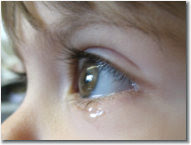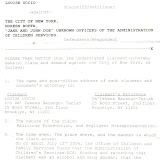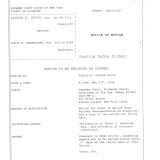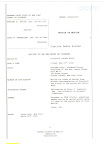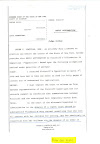
A Layman’s look at History
By JAMES M. ROTHSTEIN- Retired NYCPD Detective
On the streets of every city in America there are thousands of children, both boys and girls, selling themselves into prostitution. Almost nothing is done to discourage this. Some of these children are on their own, others are preyed upon by older children who exploit them. Surrounding and controlling these children, who have been manipulated and forced into utter physical, sexual, and emotional degradation in their daily lives, are their procurers and abusers who are even more depraved. It is these procurers and abusers who criminally and sexually exploit these children for commercial purposes: pornography, prostitution, extortion, blackmail, and human compromise; not to mention larceny, burglary, and other criminal activities.
Police make many arrests of child molesters and pedophiles who troll for children around bus terminals, arcades, and malls. Rarely are the exploiters, who operate telephone call services, pedophile exchanges, sex clubs, and pornography rings, arrested and successfully prosecuted.
Despite public concern, even outrage, little is done beyond expressions of outrage. Why is this? This certainly is not because there is a lack of information. Everyday there are reports of children who are abducted or disappear off the face of the earth, or so it seems to the families who lose their children, when in fact they become the victims of a society which is divided into five separate groups: family, homosexual, commercial, serial killers and occult.
FAMILY – Within the family group you have an inherited or given trust between the children and their elders. This group is made up of schools, institutions, religions, and stepfamilies. Because of the close relationships between the elders and the children, if child abuse or pedophilia occurs, they are difficult to uncover and corroborate. The schools, institutions, and religious sects become candy stores for the pedophile or child abuser. There are many documented cases of pedophilia and child abuse within the family group throughout the United States, such as the Clemons case in Florida and the McMartin case in California .
Children are placed or held in institutions because of physical, mental, correctional or family problems. In the early 1970’s, numerous children were taken from a Chicago institution and sent to Texas , to another institution where they were then used for sexual purposes. Sergeant Kelly of the Illinois State Police investigated this case and stopped the practice.
Within the religious group an unprecedented number of cases are coming to light, such as the Porter case in Massachusetts. Father Porter violated numerous altar boys over a span of twenty-five years in various parishes in Massachusetts . When accusations are made against a Roman Catholic priest, the priests are transferred to another parish, diocese or religious institution and are allowed to continue their perverse habit without interference from the law.
St. Johns Abbey of the Benedictine Order, in Collegeville , Minnesota , is a classic example of how the Catholic Church covers up child abuse in the Church. Over a 30 year period of time there were hundreds of abuse cases and suicides related to the abuse. In 2002, Josh Guimond, a student at St. Johns, disappeared in the middle of the night under suspicious circumstances. The investigation that followed was a coverup and anyone who dared look into the case was harassed. The Abbot, John Klassen, admitted that there were at least 13 pedophile priests at the Abbey. Yet, there were no arrests or prosecutions by either local, state, or federal authorities over this 30 year period of time. A sophomore at Albany High School , in Albany , Minnesota , asks, “Why is St. Johns above the law?” The local and state media keep their reports of the abuse which has occurred there to a bare minimum, and then only publishes these reports after they have appeared in the national media.Why??
The Porter case and others at the time brought to light a new investigative technique which has been referred to as repressed or recovered memory. This psychological tool has been used in a number of cases prosecuting pedophiles and child abusers. This novel approach has not yet been proven to be scientifically valid. When this method is used without additional objective and corroborating evidence, wrongful accusations and prosecutions can result. This problem is well documented in an article written by Lawrence Wright in the May 24, 1993, edition of New Yorker Magazine. In this article, Mr. Wright describes how, in some cases, after additional research was done, this “recovered memory” method was shown to be flawed, causing those cases to fall apart and resulting in the needless and unwarranted destruction of the family.
As heinous as these crimes of sexual exploitation of children are, an over zealous uninformed law enforcement agency or prosecutor, who uses less than scientific investigative methods to conduct a “witch hunt,” can wreak havoc on our society. Abusive, unwarranted prosecutions based on unscientific and improper investigative methods used by police and prosecutors do not help to provide any real solution to this problem of the criminal sexual exploitation of children. Rather, they consume valuable and very limited resources and help allow many offenders to continue their crimes against children un-abated. This novel approach “recovered memory” is an interesting new method, but it must be closely monitored until it is an exact science, and there must be additional corroboration with its use in any prosecution.
HOMOSEXUAL – For the purpose of this report, the true homosexual pedophile is distinct from the more violent serial killers described later. The homosexual believes he is not hurting the child, but is in fact offering him a better life style. The child is given all the worldly possessions they desire and are told that their parents do not want him. This is a common and effective ploy used to keep the child. After the child has been in the clutches of the pedophile community for more than seventy-two hours, that child is generally lost to society. The child’s fear of parents and friends finding out about the degradation in which that child has been involved, keeps that child from leaving.
A notorious homosexual pedophile and procurer, Ben Rose, is a classic example of the mentality observed in this group. Ben Rose was arrested after an investigation by the New York Police Department at his residence on St. Mark’s Place in New York City during the summer of 1972. At the time of the arrest, he had in his possession three young boy ages 14-15 years, who had been transported by him from Baltimore to New York City for the specific purpose of sexual exploitation. Upon his arrest, he agreed to cooperate with the New York City Police Department and an investigation was begun under the code name GAFF. This investigation uncovered the commercial part of pedophilia and child abuse.
COMMERCIAL – The commercial group includes child pornography, prostitution, pimping, extortion, and human intelligence. Child pornography, prostitution, and pimping are well organized and promoted throughout the pedophile community. Because of Ben Rose’s cooperation with investigators, many of the rumors and information under investigation were verified. He informed the New York City Detectives that in November of 1971, three boys, ages 14-15 years, were sexually abused and then murdered in his apartment on East 64th Street in New York City by three men he identified as Dr. Chesky (a surgeon), Leonard Stewart (OPEC), and Tippy Richardson (CIA). The bodies were then transported to Connecticut by car and then buried on a farm. Under the GAFF investigation these murders were to be assigned to other investigators in the New York City Police Department, but then disappeared in the hierarchy of the Department.
A second investigation conducted in the mid 1970’s, by the Police Department during which thirteen homicides, plus the murder of these 14-15 year old boys at Ben Rose’s apartment, were investigated under the code name OPERATION TOGETHER. This investigation was under the command of Deputy Inspector John Colin. At a critical point in the investigation, it was stopped. Inspector Colin was demoted and forced into retirement.
The third investigation was done by the New York State Select Committee on Crime. This Committee served subpoenas on both Tippy Richardson and Leonard Stewart. When Richardson was served with the subpoena and questioned by the detectives, he informed them that because he worked for the CIA, the subpoena would be quashed, invoking National Security. He was correct, because before the detectives returned to their offices, the subpoena was withdrawn. One wonders what part of the National Security Act allows the murder of children.
Leonard Stewart was also served, questioned, and appeared at the committee’s offices. He did not testify. As in all cases of this magnitude, the attorney who represented these politically connected pedophiles was Enid Gerling of New York, who also represented both Richardson and Stewart.
Enid Gerling stated at that time that the investigation was on the right track and should not stop. In conversations with Gerling over the past number of years, she has often stated that she owes these individuals no allegiance and would gladly give them up.
During the investigation by the New York State Select Committee on Crime, information was received that Roy Cohn (famed attorney who represented Senator Joe McCarthy at the notorious McCarthy Hearings) helped in covering up the murder and the disposal of the bodies. When Cohn was questioned about the murder of the three 14-15 year old boys at Ben Rose’s apartment, he stated that he was aware of what had happened, but would comment no further. Information at that time was that Cohn was often used to compromise people and, if situations such as those described by Rose occurred, Cohn would take care of them.
Rose also supplied information as to the methamphetamine sales in juice bars owned by organized crime. These bars were meeting places for children, pedophiles, and various pedophile rings. The investigation into this activity was again buried in the hierarchy of the Police Department and not investigated. As a direct result of this investigation, Police Officer Richard Johnson of the New York City Police Department, a primary investigator, became the subject of a bombing of his residence. Recent information is that the contract was ordered by someone inside the New York City Police Department. This case is unsolved and the cover up continues to this day.
In the summer of 1966, at 301 West 45 Street, one of the most notorious procurers of children, Willie Dunn, was caught with eight young boys in his apartment. These boys ranged in age from 14-17 years. The boys were let go and Dunn was sent on his way based on the faulty premise asserted by the police department hierarchy that no crime had been directly observed. Over the years Dunn perfected his ways of procuring children to the point where he traveled the United States in a Winnebago Motor Home kidnapping, picking up, and transporting children to pedophiles wherever they were needed. Dunn was also involved with Sammy Bronfman in the planning of Bronfman’s own kidnapping. Sammy had wanted his father, Edgar Bronfman, to pay the ransom for his kidnapping, which he would then use to open his own disco catering to pedophiles.
Mel Patrick Lynch and Dominic Byrne were arrested and convicted of the kidnapping. A subsequent investigation showed that Lynch was given $1,000,000.00 to do the time in prison for the kidnapping. The police department chose to bury it.
In 1977-78, Willie Dunn was on trial in Norfolk, Virginia, by federal authorities for charges stemming from a stolen check fraud. In US vs Dunn, in Norfolk Federal Court, Dunn, acting as his own attorney, was able to tell the court that he was in fact a victim because of the Bronfman kidnapping. The case was covered for the media by Penciak of the Associated Press and when the story was given to the New York Press, it only ran in the first edition. Bronfman informed the various media outlets that if the stories were not withdrawn he would pull all Seagram’s advertising.
Another investigation led to a major supplier of children to pedophiles throughout the United States. In 1977, information was obtained from a high level informant, Dale Smith aka Dale St-Clair, who was in the child prostitution business. Dale Smith had inside information that a Paul Abrams was a procurer with connections to other procurers. They had stables with substantial stocks of flesh available. Abrams catered to the so-called elite, influential, and wealthy of our society. With Dale Smith’s information, evidence was developed for a wiretap order. When the District Attorney, Robert Morgenthau of New York , was approached for a wiretap order, he refused, knowing full well that it would expose many prominent people as pedophiles. On November 28, 1977 , Paul Abrams’ operation at 230 Central Park West in New York City , was raided by the New York City Police Department. The New York Daily News, at the time, stated hundreds and hundreds of names were found in the raid.These actions prevented a full scale investigation, which is always the case.
During the summer of 1967, a well organized movement of prostitutes into New York City by pimps throughout the United States was observed. Young girls were shipped back and forth across the country as they were needed. The core cities were Minneapolis, Minnesota, and Columbus, Ohio, with most major cities in the United States used as sales outlets. New York City Detectives were able to establish a liaison with Minneapolis and Columbus. Information was exchanged and a pattern developed. In the mid 1970’s, members of the New York City Police Department were able to convince investigators of the IRS and agents from the FBI to join the investigation. A joint investigation was launched and eleven of the top twelve pimps were convicted of various crimes, virtually breaking the back of the organization. Prostitution is not a victimless crime. The victim is the prostitute.The intelligence obtained over this period of time made it possible to locate missing girls from across the United States, who had fallen into prostitution, to be located in a matter of days either dead or alive. After the cases were completed, the FBI agents were given different assignments.
In 1976-77, the New York State Select Committee on Crime conducted hearings on prostitution. Testimony was given by a number of prostitutes from around the United States describing their activities. A film was produced by Brian Kelly which graphically describes how these children were abused and murdered.The hierarchy of the New York City Police Department refused to cooperate with the investigation and hearings, in fact, harassed the detectives assigned to the investigation.
HUMAN INTELLIGENCE – is a fancy way of describing how the Intelligence Community uses children to compromise anybody they deem necessary. Extortion and human intelligence often are byproducts of pornography and prostitution. In 1992, after two hours of conversation with Michael Ricconiscutto (who has admitted a long involvement with CIA, Wackenhut, and other covert operations) concerning the types of operations he had been involved in during his lifetime, it became apparent that he had become involved at a very young age. When asked, he stated that at the age of 13, while visiting Chile with members of the Chilean Council, he was recruited by Chuck Emmerett of the CIA. At this point Ricconiscutto was asked if he had been in fact become a “chicken”, a term used by pedophiles to represent the children they prey on. He stated “Yes, and that he had also been trained in the fine art of human intelligence.” ......
